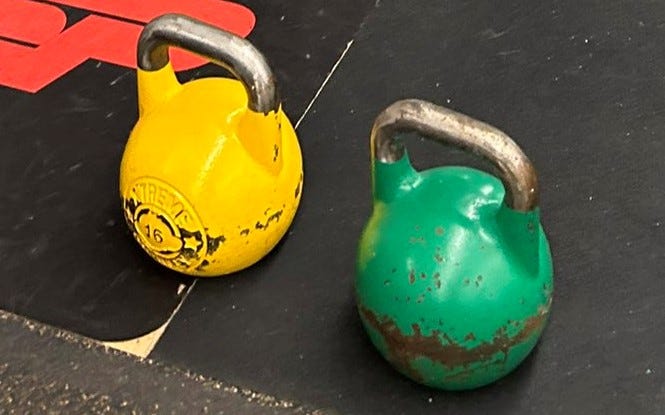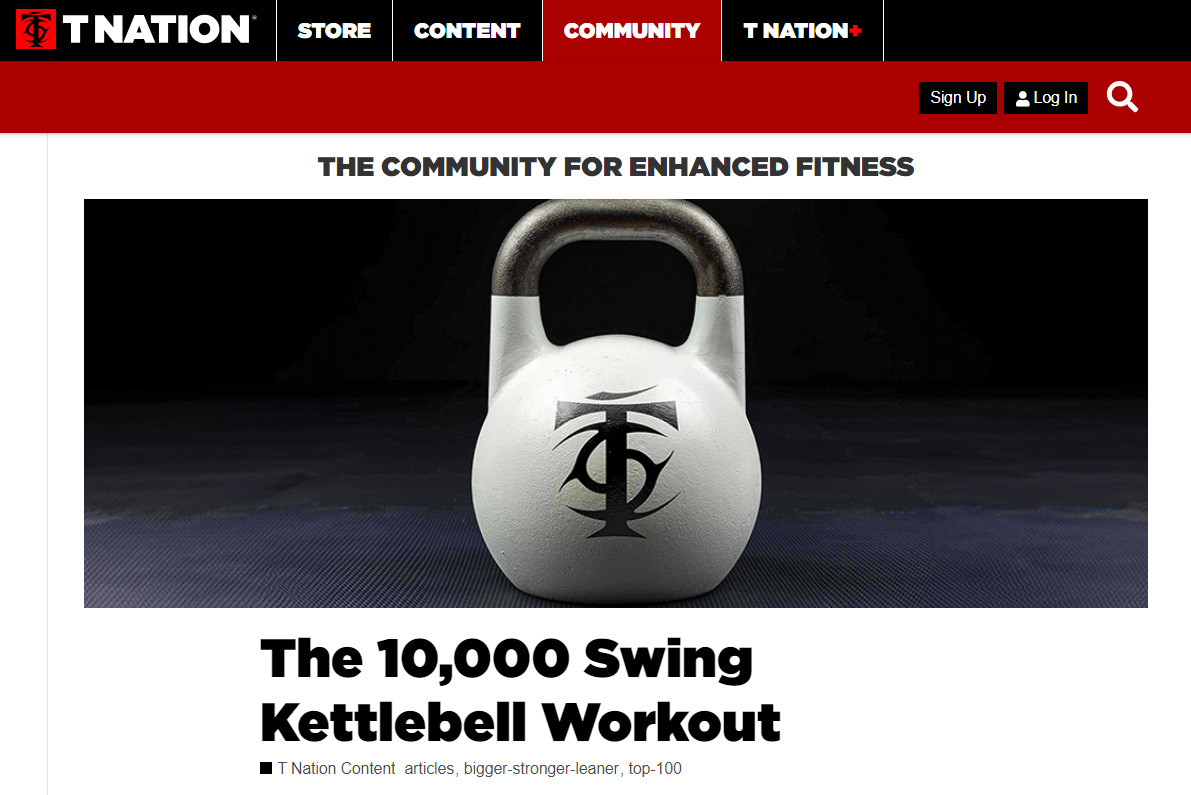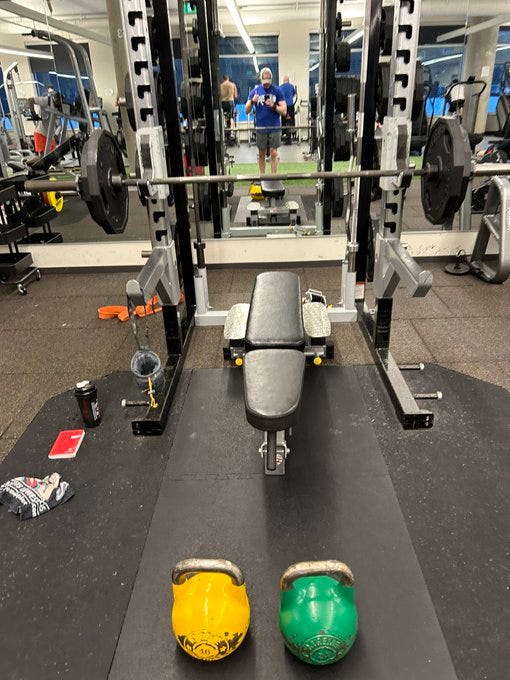January proved to be more than just the beginning of a new year for me; it marked the start of a transformative journey – the 10,000 kettlebell swing challenge. Inspired by the Testosterone Nation website, this challenge promised not just physical gains but a mental test of resilience. As I embarked on this daunting task, I discovered that it wasn't merely a workout regimen; it was a journey of self-discovery, proving that one is stronger than they might believe.
It all started with an X/Twitter post. Jason Quilliam (@jtquilliam) who by week-day is the Chief of Protocol for the Government of Saskatchewan, and by week-end is a Lieutenant-Colonel in the Canadian Army Reserve, posted this call to action to the hashtag #Canmiltwitter (Canadian Military Twitter)
Jason is in the throes of an inspiring personal health transformation - and he’s quite successful! Give him a follow on social media and follow his progress.
So, when he threw down the gauntlet, me being always up for a good challenge and passionate about incorporating physical fitness into a comprehensive, personal total health and wellness plan, I took the bait.
So, what is the 10,000 Kettlebell Swing Challenge?
First, what’s a kettlebell swing? Simply, one takes what appears to be a cannonball with a handle on the top, and swings it between one’s legs, and then up to mid-torso level (see photo).
So now, what is the 10,000 Kettlebell Swing Challenge?
The challenge was proposed by coach Dan John on the website Testosterone Nation way back in 2013 (check it out here). There are, now ten years later, several variations of it, but in general the challenge goes like this:
Do 500 kettlebell swings per workout. Workout 4-5 times per week until you reach 10,000 total swing - which is twenty workouts at 500 swings per session. Add strength moves as well, if you are so inclined.
So, the version I did went like this:
Each workout consisted of five “clusters.” Each “cluster” consisted of four sets of kettlebell swings increasing in number for a total of 100 swings per “cluster” with a strength move of increasing reps added after sets one to three. Rest 30 seconds to one minute between sets, and two to three minutes between clusters. That’s probably confusing to read, so here it is laid out with a Bench Press strength move:
10 Kettlebell Swings, 1 Bench Press, Rest 30 seconds.
15 Kettlebell Swings, 2 Bench Presses, Rest 30 seconds.
25 Kettlebell Swings, 3 Bench Presses, Rest 30 Seconds.
50 Kettlebell Swings. Rest two minutes.
Repeat four more times.
During clusters four and five, I increased the rest between sets to 60 seconds, and three minutes between clusters.
Scheduling of the workouts is up to you (but the challenge is to do it all in a month) and the recommended rotation is two days of workouts, followed by one day rest and repeat until done. Following this rotation, you do five workouts a week and complete twenty workouts/10,000 swings in 28 days. This gives you a buffer if life intervenes - an injury, a trip out of town etc. - so that there are 2 or 3 more days in the month to complete the challenge.
The prescribed kettlebell weight is 53lbs for men, 35lbs for women. Bear in mind these weights are for the uber-fit folks at Testosterone Nation, so to ease myself into it, especially since this challenge came after three weeks of Christmas leave and the associated consumption of adult beverages, sugary snacks and lounging on the couch, for the first five workouts I used 35lb kettlebells, and for the remainder I treated the first cluster as a warm up with 35lbs, and did clusters 2 through 5 with 53lbs.
If you choose to add strength workouts, you should focus on the high-payoff “big lifts” and if you are doing the two-on, one-off rotation for five workouts a week, at least one workout should be just swings to let your body rest…a little.
So, my five-workout rotation was as follows:
Workout 1 - Bench Press.
Workout 2 - Squat.
Workout 3 - Swings only.
Workout 4 - Deadlift.
Workout 5 - Pen-lay rows.
Repeat four times.
So. If you’re interested, here are some hints.
**Starting Point: Choosing the Right Weight:**
One of the key lessons from my experience was the importance of selecting the right kettlebell weight. Beginning with a weight that suits your current fitness level is crucial to avoiding injuries and sustaining motivation. The goal is progress, not perfection. I started with a weight that felt challenging yet manageable, allowing me to focus on proper form and build strength gradually. As I mentioned previously, in the first week I used a 35 lb kettlebell, from week 2 on I used, primarily, a 53 lb kettlebell and in one instance during the last week I used a 62 lb kettlebell. Listen to your body.
**Rest: An Essential Component:**
In the pursuit of completing 10,000 kettlebell swings, I quickly learned that rest is not a sign of weakness but a necessity. This challenge is a marathon, not a sprint. Pushing too hard without adequate rest can lead to burnout or even injuries. Listening to my body became paramount, and I found that strategic rest days not only aided recovery but also contributed to better overall performance during the intense workout sessions. Additionally, rest during the workout was also critical - finding the right amount of rest to recuperate, but not drag out the session so it lasted too long.
**Form is King:**
Using proper form is non-negotiable when swinging a kettlebell repeatedly. Improper technique not only hinders progress but also increases the risk of injury. Throughout the challenge, I focused on maintaining a strong and controlled form, ensuring that each swing engaged the intended muscles. This emphasis on technique not only safeguarded my well-being but also enhanced the effectiveness of each repetition. The key here is that, despite the name “Kettlebell Swing” the key is to tread it as an explosive hip-hinge where the momentum comes from a hip thrust using glutes, legs, knees and ankles. The arms should be like straps, not used to actually move the bell.
**The Mental Challenge: Beyond the Physical Strain:**
As the kettlebell swing count increased, I realized that this challenge was more than a physical test—it was a mental challenge of endurance and discipline. There were days when the last thing I wanted to do was swing that kettlebell, but pushing through those moments became a victory in itself. The 10,000 kettlebell swings weren't just building my physical strength; they were forging mental resilience, teaching me that determination can overcome even the most daunting tasks. Tracking my progress on social media by sharing photos as I progressed kept me on track and accountable despite however tired or bored I might be. I’ll talk more about an accountability group below.
**You Are Stronger Than You Think:**
Perhaps the most profound realization of this challenge was the uncovering of untapped strength. The human body possesses an incredible capacity for adaptation and growth. What seemed insurmountable at the beginning became achievable through consistent effort and dedication. It reaffirmed the notion that our perceived limitations are often self-imposed, and pushing beyond them can lead to remarkable achievements.
**Hints for Success:**
For those considering taking on the 10,000 kettlebell swing challenge, a few hints proved invaluable during my journey:
1. **Start at a weight that's good for you:** The right weight sets the foundation for a successful challenge. It should be challenging but not overwhelming. Also, while I incorporated the strength moves into my challenge, don’t feel like you have to. Listen to your body - the intent is doing the WHOLE 10,000 kettlebell swings, not injuring yourself so you can’t finish, or overtraining to the point you just give up. On that note:
2. **Rest when you have to:** Recognize the importance of rest days. Overtraining can hinder progress and increase the risk of injury. Use appropriate rest between clusters and sets. Remember, the goal is 10,000 kettlebell swings completed. Its less important how fast you complete them.
3. **Use proper form to avoid injuries:** Prioritize technique over volume. A focus on form not only prevents injuries but also ensures optimal muscle engagement.
4. **Stick to it:** Consistency is key. On days when motivation wanes, remember that each swing contributes to your overall progress.
5. **Have an accountability group:** a small group of Canadian military X/Twitter users joined the challenge and posted their progress along the way. I found this was key, as I mentioned above the mental challenge was far greater than the physical challenge. Knowing there were others that were doing the same challenge and watching for your update - and cheering you along! - helped me stay motivated when I really didn’t want to do another bloody kettlebell swing workout.
In conclusion, the 10,000 kettlebell swing challenge proved to be a transformative experience that extended beyond physical fitness. It showcased the harmony of physical and mental strength, reminding me that challenges, when approached with dedication and resilience, can lead to remarkable personal growth. While you may not need to swing 10,000 times, consider incorporating kettlebell swings into your routine – the benefits extend far beyond the physical realm. Afterwards, I weighed 5 lbs lighter than I was at the start (although I have to admit I slipped on my diet and might have been able to lose more) and I definitely felt stronger and more energetic. The numbers don’t lie: I could really feel the 35 lb kettlebell when I started but by the end I was able to do at least one workout with a 62 lb kettlebell.
So, my advice is to take the plunge and do the challenge. Follow YOUR plan using YOUR schedule and YOUR appropriate weight, rep and rest combo. At the end you’ll be fitter, lighter, stronger and you’ll have a feeling of accomplishment.










Dave a worthy accomplishment. I am about to get stsrted